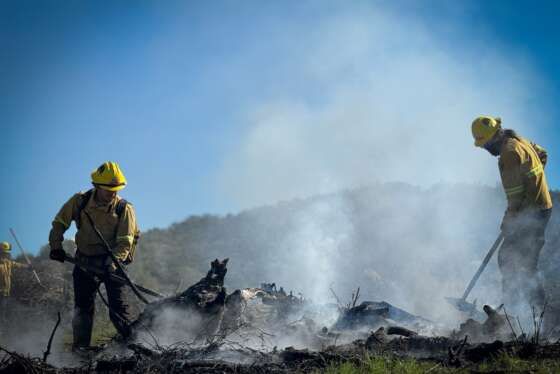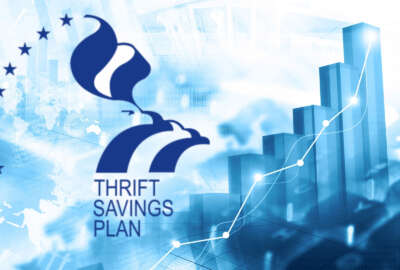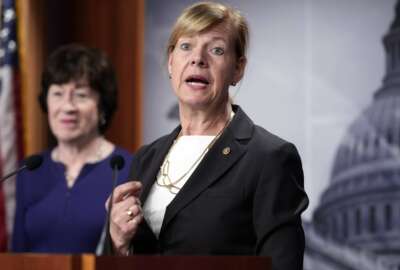Hubbard Radio Washington DC, LLC. All rights reserved. This website is not intended for users located within the European Economic Area.
On Air: Federal News Network
Trending:
NASA reveals how it revived a struggling program
The space agency gave Federal News Radio an exclusive, in-depth look at a recent IT review session on its enterprise service desk. With the program faltering...
This story is Part 3 of Federal News Radio’s special report Inside TechStat.
NASA’s IT helpdesk was backed up, dropping calls and of little help to its employees.
To fix the program, NASA called for the enterprise service desk (ESD) to go through a TechStat session.
“TechStat, we felt, was the best way to get senior agency leadership involved from a cross section of the user community,” said Gene Sullivan, NASA’s associate chief information officer for capital planning. “We had a senior representative from the CFO office; the CIO was chairing it; the deputy chief engineer was on the board; we had the director of the [shared service center] participating in it and the project manager. We had a pretty broad based group of customers who could really dig into it, identify the issue and develop a plan of action to resolve those issues.”
Sullivan and Lara Petze, NASA TechStat lead, gave Federal News Radio an exclusive look inside the April 2012 IT review session of the ESD and the resulting steps it took to fix the program.
NASA wanted to consolidate several disparate help desks from across the country in its NASA Shared Service Center in Mississippi under the I3P program.
The Problem
Sullivan said the service desk quickly became overwhelmed by the volume of calls, which resulted in a long wait time. He said users also had trouble ordering new services or hardware. The volume of help calls resulted in a backlog of orders.
“We had users waiting up to 20 minutes to get through to a call agent. We were finding a lot of dropped calls where users would get frustrated and hang up and not call back,” Sullivan said. “It was a huge customer service issue where customers were frustrated, they weren’t getting the service they needed and they couldn’t even report the issues they were having with their end-user service equipment or network equipment. It was a critical issue, it was a change management issue and we knew we had to address it quickly.”
He added the integration of the ESD also was a problem. The service desk handled trouble tickets, but also had to decide whether the issue needed to go to the Tier 2 level, which had to be integrated with a vendor’s help desk system.
“In terms of the ordering system, if an employee wanted to order a new laptop or a new PDA, that had to be integrated with our financial system in order to do a funds check to make sure funds were available,” Sullivan said. “There were a lot of complexities we had to work through.”
Preparing for the TechStat
Petze said the first step for any review is data collection. But she said the ESD wouldn’t be like any other TechStat. 
She said a team of about 25 people figured out what needed to be addressed in the TechStat and collected data over a two-month period.
Petze said the team interviewed customers, the project team at the shared services center, the service executive and subject matter experts.
The team had to figure out what information they had, where the gaps were and how they were going to fill those gaps. They looked at cost, schedule and performance metrics to get a better understanding of where the program stood.
“We had some pretty good expertise in terms of technical competence, project management competence and financial management competence, which were all brought together to identify the issues and identify what needed to be done to correct those actions,” Sullivan said.
Petze said the interagency team reviewed the documents, interviewed via phone the parties involved and provided follow up emails.
“With ESD, I had the opportunity to meet with everyone involved and explain why I’m not the enemy, why this is not a bad thing, why we would want to do this and the opportunity that’s available out of the TechStat to identify things that could be improved,” she said. “In the beginning when they get the phone call, of course they don’t want to hear from you. But over the course of the TechStat process and analysis, there is a trust gaining.”
Sullivan added they try to alleviate concerns about going through a TechStat by reemphasizing the project team can make their case to senior officials that the program needs more people or money.
“That’s the way the team we formed considers the most important part of TechStat is that how can we help you be successful. Not how can we punish you? How can we make you successful in what you are trying to achieve here?” Sullivan said.
The TechStat
Once the data is collected and analyzed, it’s Petze’s job to coordinate schedules among senior officials for the actual session. TechStats are done mainly in person and last for 60 to 90 minutes. She said the session is conducted in a formal manner.
The conference room is set up in a horseshoe shape so communication is easier and everyone can see each other.
Petze said the TechStat started with NASA CIO Linda Cureton setting the expectations and tone of the meeting. Then, Petze went through the analysis, findings and recommendations. The ESD team presented information based on the analysis and recommendations as well.
“The ESD team reviewed the recommendations and said they agreed,” she said. “That doesn’t happen all the time.”
The bulk of the session, she said, is the senior leaders discussing the situation and what actions need to come out of the review.
“The session with the senior leaders is get in there, don’t beat around the bush and get right to the issues, and develop a plan to resolve the issues,” Sullivan said. “We have a variety of people there with different experiences and backgrounds. Some of them are very strong with project and program management like our chief engineer. Some of them are from a financial perspective like our CFP representative. We also have our program management board leader there. It’s really just a healthy discussion.”
He said people offer recommendations or offer help to get something done.
Cureton, however, is the final decision maker based on the input from the group.
At the end, Petze sends out the minutes of the session to all those involved to make sure everyone is on the same page.
Aftermath of TechStat
Sullivan said the problems with ESD even before NASA conducted the review session became clear. He said NASA couldn’t wait for the results of the TechStat to fix them. 
Petze said the majority of the recommendations from the TechStat session for ESD were around governance.
She said ESD needed a solid governance plan, a fully-resourced schedule, an updated project plan that incorporated the lessons learned into future phases of the program, including the business case.
Sullivan added TechStat showed the shared service center made decisions about ESD in a vacuum.
“They weren’t looking at the impact on other projects and other parts of the I3P infrastructure program,” Sullivan said. “One of the corrective actions was to bring that to the IT review board so our decision making body could understand what they wanted to do, understand the impacts and give them direction.”
A second area of recommendations revolved around the system’s enterprise architecture to improve the integration points.
And finally, TechStat showed the communication between the shared service center and its customers was lacking. Sullivan said NASA employees needed some basic training for how to use the ESD, how long it would take to get it and other basic aspects of the service desk.
“The corrective action plan is developed and I track that as the TechStat lead,” Petze said. “The governance for ESD is with the NASA IT management board, who receives the metrics weekly. I will periodically provide them with updates to the action plan.”
She said one of the key outcomes from this TechStat was the realization was the problems initially thought was ESD’s fault was actually with the Tier 2 vendor.
Sullivan said NASA brought in the Tier 2 vendor’s senior leadership and had them develop a plan of action to correct the performance problems.
Sullivan said ESD has improved over the last few months. He said the ESD’s metrics are all green at Tier 1 with good response times and handoffs to the Tier 2 vendor.
“Each week, the governance board receives metrics from both Tier 1 and Tier 2 vendors so that they are able to focus on where the problems are and figure out solutions,” Petze said. “The board will continue to monitor and track the program’s performance.”
MORE FROM SPECIAL REPORT INSIDE TECHSTAT:
IT projects pulled from brink of failure
Treasury tackles IT reviews in a new way
National archives gets ready to taste first fruits of TechStat labor
RELATED STORIES:
NASA upgrades IT for now with eye on future
Copyright © 2024 Federal News Network. All rights reserved. This website is not intended for users located within the European Economic Area.
Jason Miller
Jason Miller is executive editor of Federal News Network and directs news coverage on the people, policy and programs of the federal government.
Follow @jmillerWFED
Related Topics
Fed Photo of the Day

Hogback Ridge Fuels Crew cleaning up after a pile burn near Kelseyville, CA
Daily photos of things happening in and around the federal government.




